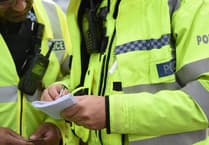FOUR species of butterfly had their worst year in at least a decade in Devon, new figures have revealed.
Numbers of Silver-washed Fritillary, Dark Green Fritillary, Wood White and Small Heath were all lower than at any time in the past 10 years.
Three more species – Pearl-bordered Fritillary, Small Pearl-bordered Fritillary and Grayling – had their second-lowest count for the period, and White Admiral its third lowest.
The numbers come from the UK Butterfly Monitoring Scheme (UKBMS) and Butterflies for the New Millennium (BNM) administered by national charity Butterfly Conservation, which last month revealed 2024 was the fifth-worst year overall for butterflies across the country, with more than half of species in long-term decline for the first time on record.
Butterfly Conservation Devon branch recorder Pete Hurst said: ‘Unfortunately, these figures show concerning drops in the numbers of beloved local butterfly species in Devon.
‘This is in line with the national picture, and I would expect there to be similar reductions in other Devon species as well.
‘We know long spells of wet weather, which now seem to be happening more frequently, will have had a significant negative impact on last year’s showing of our butterflies, but there is much more at play.
‘Sadly, we have destroyed wildlife habitats, polluted the environment and used pesticides on an industrial scale as well as changing the climate.
‘That means when we have poor weather, these already-depleted butterfly populations are highly vulnerable and can’t bounce back like they once did - and with climate change, that unusual weather is becoming more and more usual.’
Some butterflies did fare better: Marsh Fritillary, a species found on Dartmoor, had its fourth-highest count for the decade.
He added: ‘My annual Wider Countryside Butterfly Survey square on the edge of Dartmoor actually had the second highest count of butterflies in the last six years.’





Comments
This article has no comments yet. Be the first to leave a comment.